nalco group
bone, muscle & joint pain physio
BOOK NOW / WHATSAPP ABOUT YOUR PAIN OR INJURY
- ORCHARD 400 Orchard Road #12-12 Singapore 238875
- TAMPINES 9 Tampines Grande #01-20 Singapore 528735
- SERANGOON 265 Serangoon Central Drive #04-269 Singapore 550265
Home > Blog > Physiotherapy & Hand Therapy > Conditions We Treat > RehabTech > Extracorporeal Shockwave Therapy (ESWT) Physiotherapy
EXtracorporal Shockwave Therapy (ESWT) Physiotherapy Singapore
how extracorporeal shockwave therapy (ESWT) works
In a nutshell, shockwave therapy treatment is non invasive and produces an inflammatory response, which will increase metabolic activity around the site of pain.
The number #1 function and goal is to stimulate and accelerate the healing process for the treatment of chronic muscular and tendon disorders, back, lower limb and foot pain.
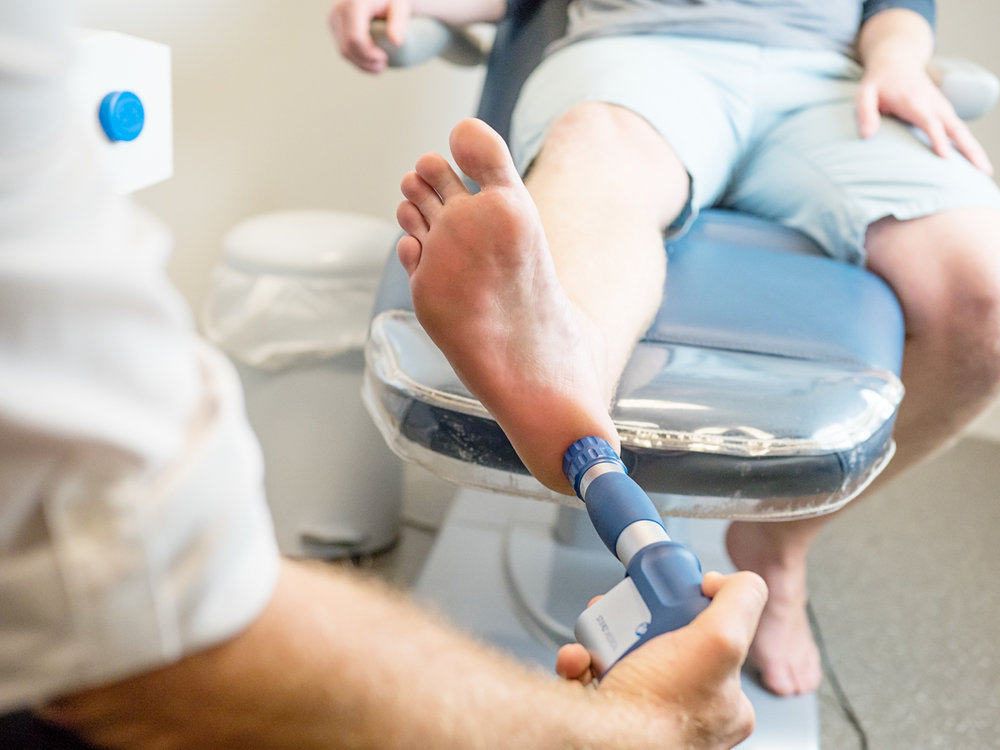
The equipment used in the procedure will generate a series of rapid impulses whereby a projectile in the handle is programmed to move up and down at specific frequency and power.
The projectile in the handle will hit the metal applicator head repeatedly, causing a series of rapid “shockwaves” which will penetrate up to several centimetres into the tissues.
The energy will cause a hyper-stimulation analgesic effect which results in many patients feeling some relief over targeted areas almost immediately.
These controlled impulses also initiate a cascade of cellular reactions which improves blood flow and tissue repair, even in areas which have been damaged for long periods of time.
Generally there are three (3) different kinds of shockwave therapy that is available today:
- Radial shockwave therapy which is typically used for for large area treatment
- Focal shockwave therapy focused for specific pin-point targeted treatment and lastly
- De-focused shockwave therapy which is used in treatment of complex diabetic wounds and ulcers
Each different types of shockwave therapy machine is used by a variety of health professionals to treat specific conditions.
shockwave therapy can be used to treat the following conditions:
|
|
15 reasons for Shockwave therapy treatments
- No injections required
- Non-surgical / Non-invasive / Not surgery
- No medications or medicines involved
- Convenient: can be done in our Phoenix Rehab clinics at your convenience
- No need for anaesthesia or painkillers
- Minimal risks or side effects
- Quick pain relief with numbing analgesic effect (Decrease Of Muscle Tension By Inhibiting Spasms)
- Stimulates blood flow, circulation and faster healing
- May stimulate collagen production for faster healing
- Shockwave therapy is highly effective in treating chronic conditions
- Breaks up inflammation tissue
- Release of trigger points
- Promotes restoration of tissue and joint mobility
- Improved Micro Circulation & Metabolism shockwave therapy technology accelerates removal of nociceptive metabolites, increases oxygenation and supplies the damaged tissue with a source of energy. It supports removal of histamine, lactic acid and other irritating agents.
- Clinically proven and used successfully throughout the world in major hospitals and treatment centers.
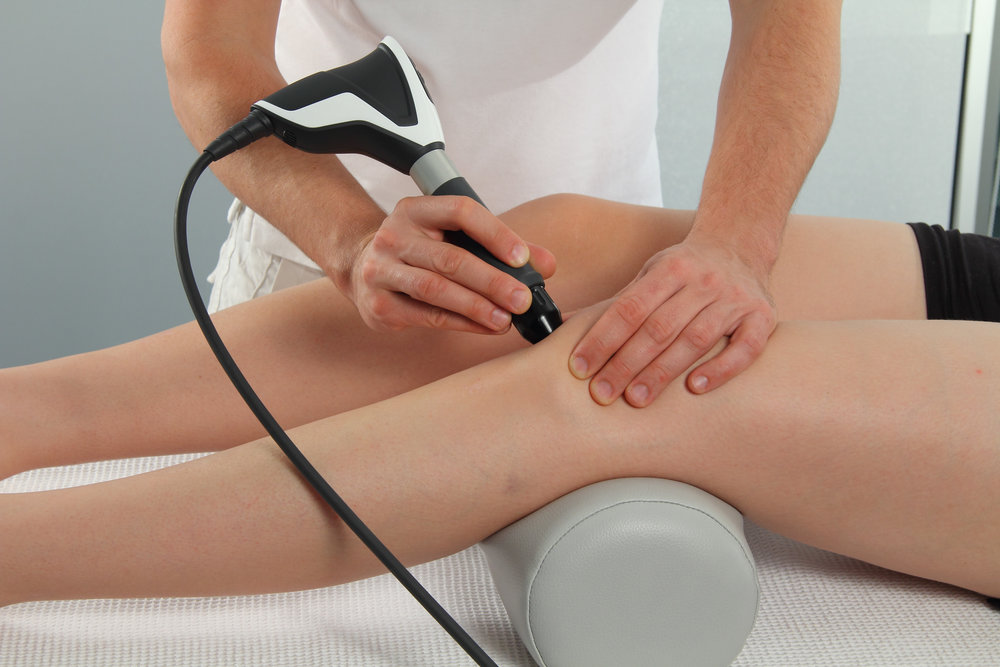
extracorporeal shockwave therapy (ESWT) sequence
Shockwave therapy is a non-invasive treatment that can be done in 3 simple steps:
- The location of the area to be treated is located and determined by the doctor through palpation. This is done to ensure the therapy is delivered accurately.
- A friction reducing gel is applied to the area targeted. The gel is necessary so the transfer of the percussion waves is done smoothly and efficiently.
- The shockwave applicator is pushed into the area that needs treatment and the start button is pressed for an indicated number of impulses to each section.
EH, Are all shockwave therapy machines the same?
Of course not - there are three (3) major factors that come to play with regards to shockwave effectiveness:
- Quality of shockwave therapy machine impacts the shockwave quality and will affect the healing outcomes. To be extra cautious and that you receive the best shockwave therapy care possible, pay attention to the make and model of the shockwave device that is used to treat you and check it online - if it can be purchased from online platforms, please be cautious.
- Quality, skill and experience of the therapist administering: this is why in Phoenix Rehab we ONLY cherry-pick the most experienced principal physiotherapists, hand therapists, TCM physician etc to work with - because only the most experienced and best will do.
- Patients timely and consistent follow up for both shockwave therapy as well as hands on manual therapy with our skilled principal therapists. Accelerating healing and recovery takes effort and dedication, and we will do our utmost to serve you and get you back to 100%, but we will need you to turn up and come back too.
What is Radial Shockwave therapy?
Broad healing pulsation for large treatment areas
Radial Shockwave Therapy (RSWT) is the most common form of shockwave therapy available in the market today - that being said, radial shockwave is an efficient treatment method for achieving pain relief in a short period of time for many orthopedic and musculoskeletal conditions such as
Radial shockwave is ballistically generated.
This means that the radial shockwaves are formed from a projectile that is mechanically hitting a transmitter. This transmitter produces pressure waves that impacts on the surface of our skin and then continues to travel inwards into deeper tissues and structures, which in turn translates to deeper tissue management and treatments that cannot be achieved with manual therapy, massage or tools
(Hence it's a good combination to be used with manual therapy with our principal physiotherapists and hand therapists as well as INDIBA radio-frequency machine)
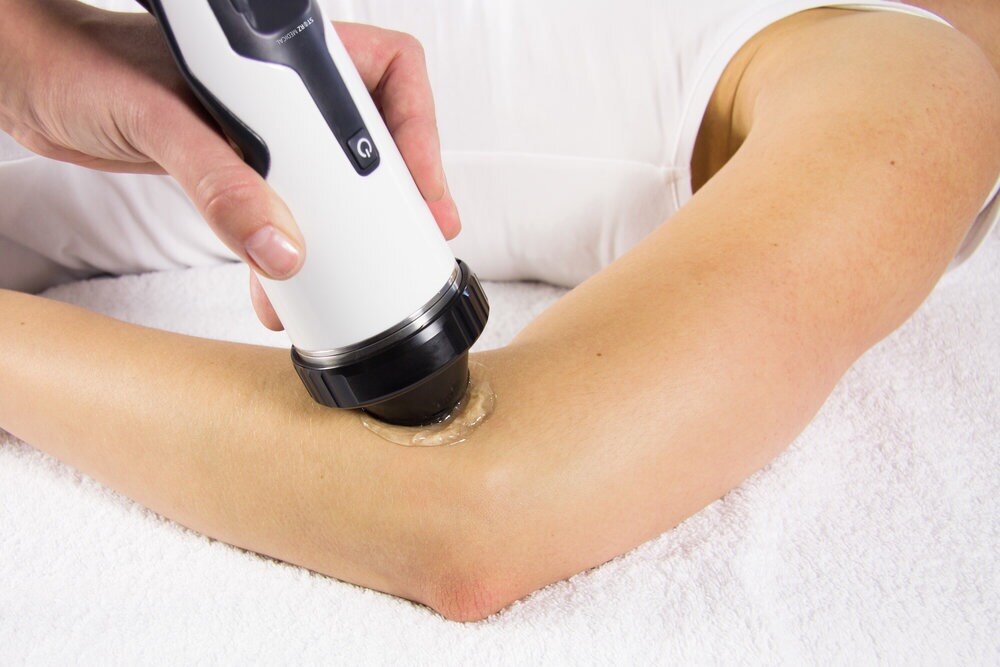
What is Focused Shockwave therapy?
SNIPER: Pin-point pulsation targets small treatment area
Focused Shockwave Therapy (FSWT) directs a concentrated shockwave therapy beam into our body and tissues - deeper, more precise treatment than previous types of shockwave technology.
Focused shockwave is generated via an electromagnetic coil, which produces a shockwave which has the most intense part of its beam inside the body, with a small surface area. This translates to a consistent high energy can be targeted at the specific part of the body that needs the treatment.
As
it is even more specialized technology, focused shockwave therapy tends to be
more costly than radial shockwave therapy. However, depending on certain
conditions, focused shockwave can be more efficient and effective.
History of Shockwave therapy in healing
The original reason and application of shockwave therapy was mainly to treat kidney stones (my family member also received shockwave therapy for her kidney stone management, back in 2015/2016).
This type of high-energy shockwave therapy is known as ESWL or extracorporeal shockwave lithotripsy, and is done in an operating theatre (OT) inpatient setting.
What happened then is that shockwave researchers also found that a lower intensity and power shockwave therapy was able to treat various musculoskeletal conditions and to manage pain. Of course, the power used for orthopedic, sports and musculoskeletal pain is much lower than the shockwave used to treat kidney stones.
The low intensity shockwaves used in therapy and pain management, also known as ESWT, are clinically safe and are designed to induce healing.
They have been extensively studied, and are an accepted modality in many orthopaedic practices, podiatry centres, and hospitals in Singapore and around the world.
extracorporeal shockwave therapy (ESWT) frequently asked questions (F.A.Q.)
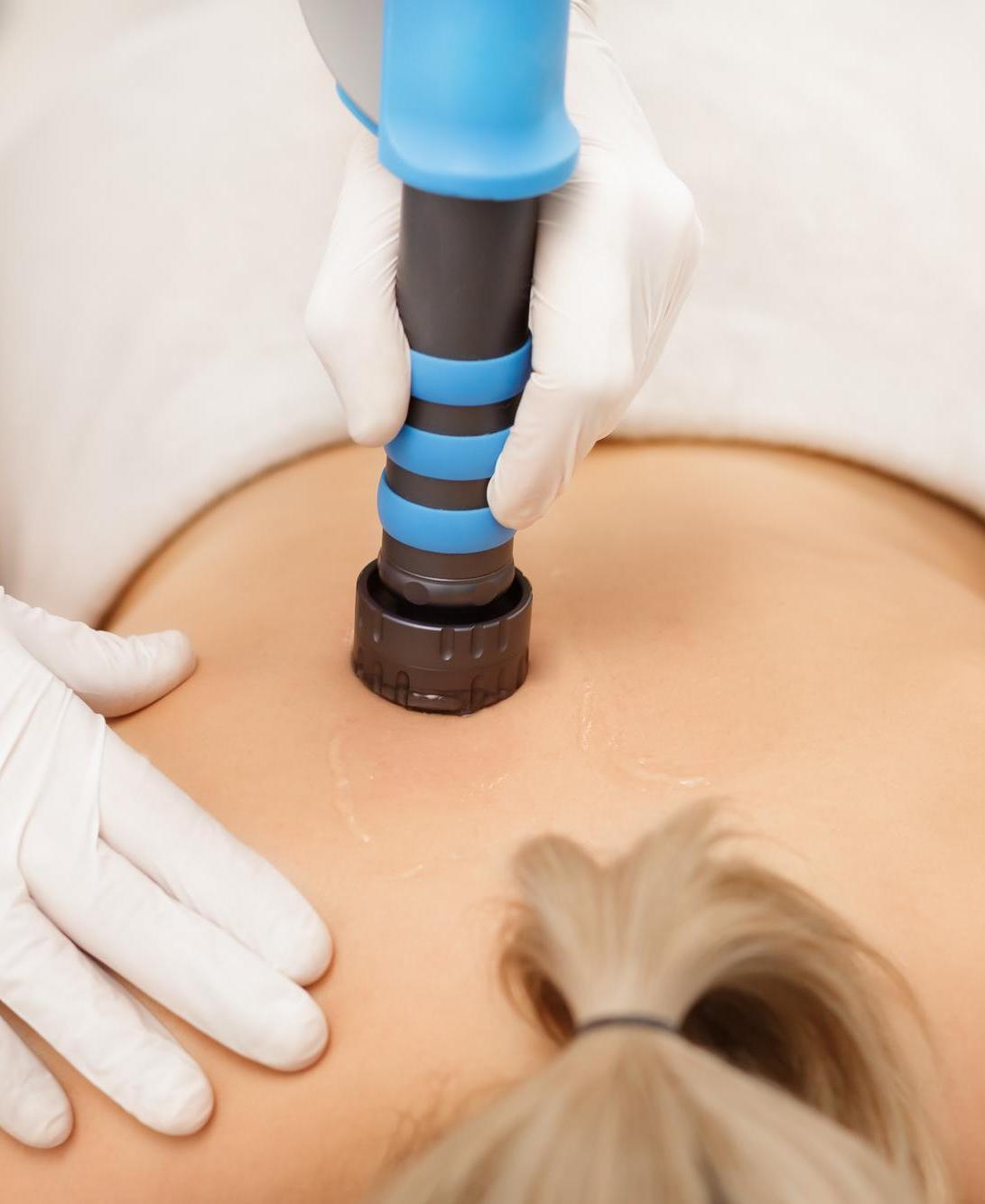
Is shockwave therapy sessions painful?
During the ESWT session, patients may feel a mild to strong ‘tapping’ sensation with each shock wave, and the treatment usually lasts 10-15 minutes.
The se shockwaves may cause slight discomfort or pain but most patients tolerate it well. Minor bruising may develop, but for that to happen is usually temporary and rare.
what are the benefits of shockwave therapy?
Shockwave therapy has a proven success track record that can be as effective or even more effective than other methods such as surgery or pharmaceuticals without the risks, complications or long recovery times.
It is non-invasive and promotes recovery by accelerating the healing process.
Shockwave therapy stimulates our natural healing, metabolism and improves blood circulation for one cohesive goal: so that the damaged tissues can regenerate and fully heal.
so What happens after a shockwave therapy treatment procedure?
This usually ranges from patient to patient, often patient may feel or experience a mild to significant difference.
Walking, moving around or driving after shockwave therapy and physiotherapy sessions usually no issues, but we usually like to be more conservative and protective of our patients so we will advise patients to reduce their physical activity levels for at least a couple of weeks.
To prevent certain conditions from getting worse, we can also prescribe you customized insole for arch support and also prescribe sports tape to secure and support the treated area too.
is there anything that should be done after each shockwave therapy treatment?
Patients can resume their routine activities after each treatment but as we're extra protective and conservative, we usually advise patients to decrease their activity levels for a couple of weeks during the weeks of shockwave therapy.
This will help also to allow the painful injuries and conditions to heal up faster by preventing aggravations, though some gentle activities are recommended.
Patients can perform cold therapy and ice the area if there is discomfort.
Any aggravating activities should be avoided if pain is still present. Concurrent therapy such as physiotherapy or hand therapy or use of customized insoles is important to address the underlying biomechanical causes of the injury.
Our principal physiotherapists, hand therapists, TCM physicians and team will advise you accordingly after each session.
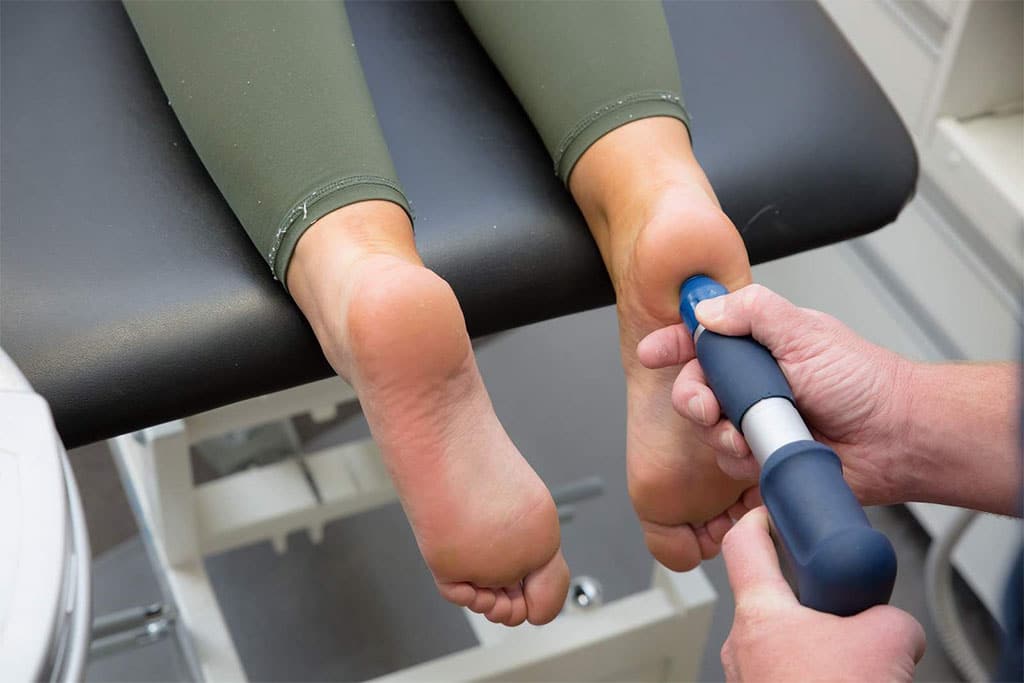
How many shockwave therapy treatments do i need to recover from my pain?
Generally, an average of 4 to 8 shockwave therapy sessions are recommended, usually at weekly intervals (hence 4 - 8 weeks).
That being said, the number of treatments can be more or less than that, depending on other factors such as
- severity of the condition
- how long the condition has been
- patient medical profile
- patient compliance
- patient body / natural response to shockwave
- tolerance
- etc
We usually advise patient to consider combining shockwave therapy together with
- physiotherapy, hand therapy, TCM (acupuncture / cupping) or massage sessions
- INDIBA radio-frequency therapy
What should I do if I am in pain after the treatment?
Shockwave therapy is specifically designed to trigger an inflammatory response, which is the body’s natural process of healing.
For this reason, please do not take anti-inflammatory medications or applying ice packs if you can help it. The pain should subside within 24-48 hours max.
Use Tylenol if necessary, provided you have no allergy reactions with this medication.
shockwave therapy Potential Complications / side effects
The main complications of shockwave therapy are pain and hypersensitivity at the site of treatment. Most of the time, either of these should steadily resolve within a couple of days.
For some patients, they experience soreness in the treated area within 2 to 4 hours after the treatment. This soreness has been reported as tolerable and not limiting.
In some situations, pain and disability may persist if the patient aggravates the pre-existing condition with too much physical activity right after treatment.
Shockwave therapy is a highly effective procedure to treat pain with minimal risks or side effects when performed by qualified therapists. Many patients report complete pain relief or significant pain reduction after only 3 to 5 treatments.
is shockwave therapy suitable for me / my condition? who shouldn't get shockwave?
Complications are infrequent with proper application of shockwave therapy by experienced healthcare providers.
Most of the time, the general public are good candidates for shockwave therapy, however we will advise and not provide shockwave to patients who:
- are pregnant (can see our women's health physiotherapist instead)
- have a pacemaker
- current cancer / tumor
- taking anticoagulants
- have blood clotting disorders
IF YOU HAVE A RECENT CORTICOSTEROID (CORTISONE) INJECTION IN THE PAST 6 WEEKS, TELL OUR PRINCIPAL PHYSIOTHERAPISTS AND HAND THERAPISTS - should let at least 6-8 weeks after any injections before starting shockwave therapy.
This list is not exhaustive. If you have any questions or concerns, please check with your physician before undergoing shockwave therapy.
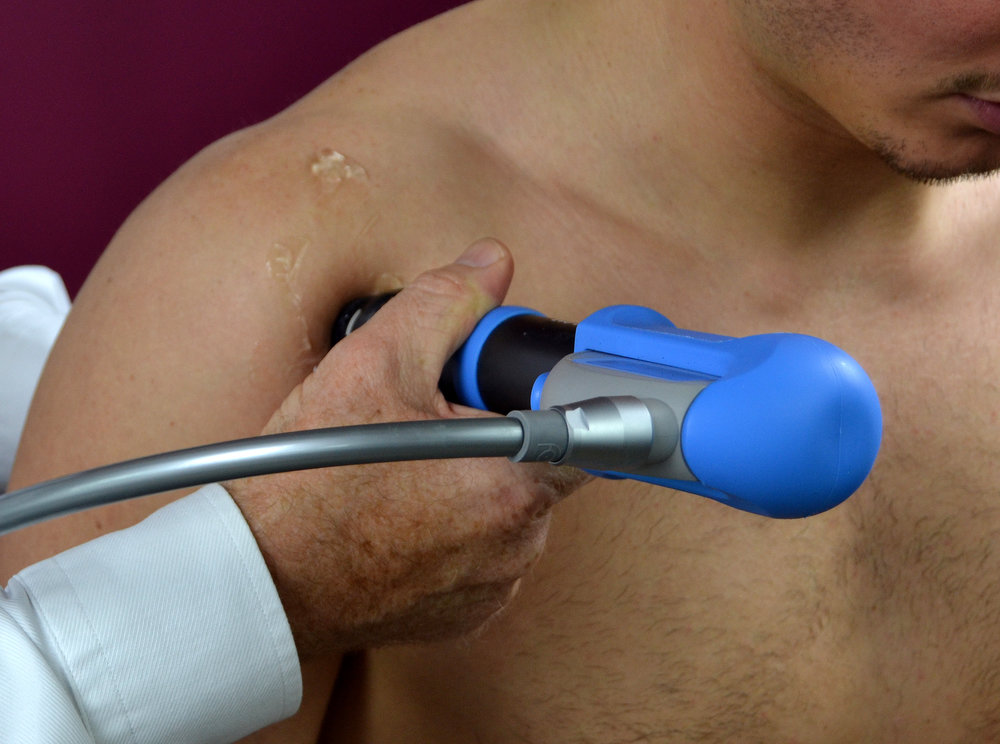
Is shockwave a substitute for surgery?
Shockwave therapy is a non-invasive treatment which can help the patient recover from painful orthopedic, sports and musculoskeletal conditions such as heel spur, plantar fasciitis, knee pain, shoulder pain, hip pain, tennis elbow and more (see conditions as well as scroll to the top of this article) without surgery.
The response to shockwave treatment will vary based on patient to patient - unfortunately in some cases especially when/where all conservative treatment options are exhausted, surgery may be what is needed.
What if it feels good after the shockwave treatment?
That's great!
That being said...please note that patients are still recommended to decrease strenuous activities for up to 48 hours after the shockwave therapy session / treatment.
What is the success rate of shockwave?
A successful shockwave treatment is considered as a patient having at least 75% reduction in pain within 3 months. Worldwide, success rates are closer to 80-90% in pain reduction.
Is shockwave therapy covered by insurance? can i claim my shockwave treatments under insurance?
This depends entirely on the insurance policy coverage and terms.
Please discuss first with your insurance agent / provider, or you can also connect with Nigel at nigel@nalcogroup.com or WhatsApp him at 98734073.
If you still have any doubts if this treatment is for you, feel free to contact our experts, or book a consultation to see if you really do need shockwave therapy.
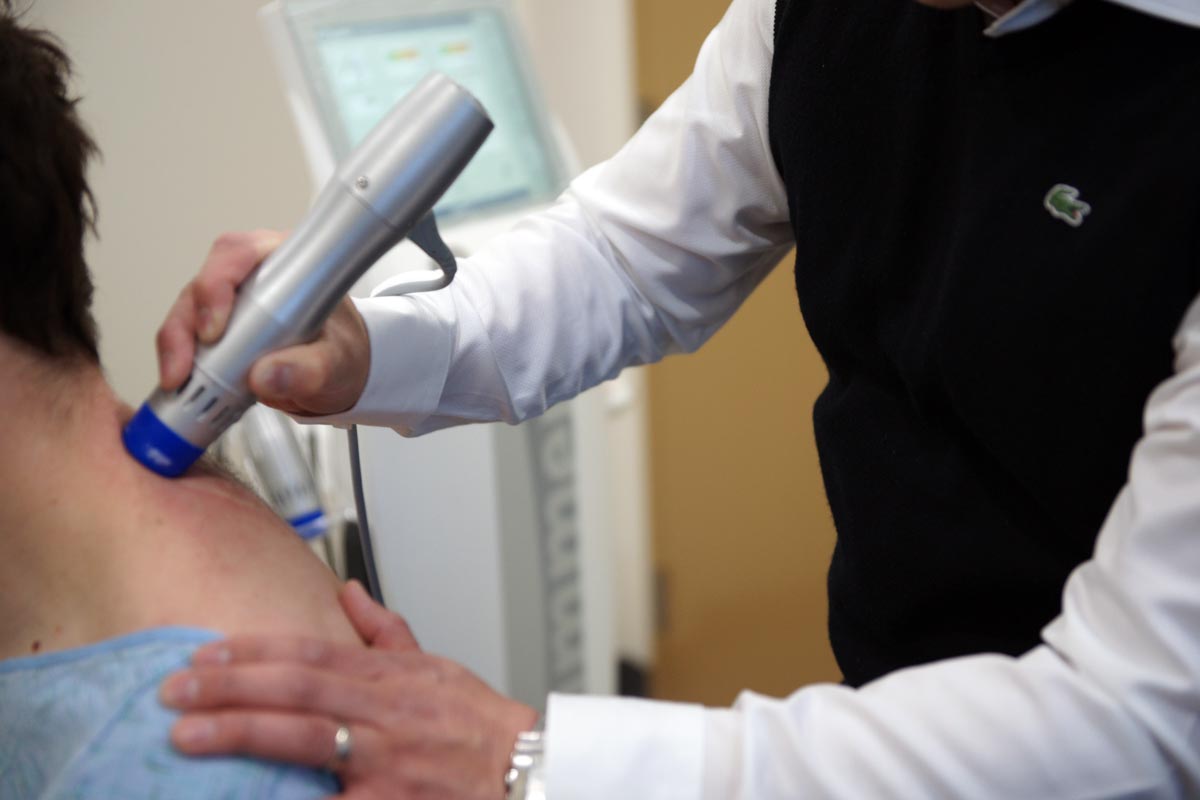
also asked questions and further discussions on extracorporeal shockwave therapy (ESWT)
Is shock wave therapy expensive?
It depends on where you go - some places charges $120 - $1000+ per session of shockwave and usually with shockwave packages.
We do not charge such a high rate nor lock you in with unnecessary packages (unless you request for a package for convenience) - as of 2020, we charge $95 per shockwave therapy use / treatment, which is on top of a physiotherapy session unless the patient wants purely shockwave therapy session.
How does shock therapy work?
Shockwave therapy causes high energy stimulations to be applied.
How does shockwave therapy work on tendons?
The treatment initiates an inflammation-like condition (pro inflammatory) in the tissue that is being treated.
The body responds by increasing the blood circulation and metabolism in the impact area which in turn accelerates the body's own healing processes. The shockwaves breakdown injured tissue and calcifications.
How long does it take for shockwave therapy to work?
The typical treatment course is 6 treatments over 6 weeks, and 50-80% of patients will report an improvement in 30 days after they have completed the full treatment cycle.
Is shockwave therapy effective?
From the results of the present study, extracorporeal shockwave therapy is an effective modality in relieving pain intensity and increase the functionality and quality of life in various tendinopathies such as plantar fasciitis, elbow tendinopathy, Achilles tendinitis and rotator cuff tendinopathy.
What are the side effects of shockwave therapy?
Side effects from ESWT are limited to mild bruising, swelling, pain, numbness or tingling in the treated area, and the recovery is minimal compared with that of surgical intervention. "Most patients take a day or two off after treatment but don't require a prolonged recovery period," says Dr. Finnoff - Feb 5, 2019
How often can you have shockwave therapy?
Shockwave treatment is usually done once a week for 3-6 weeks, depending on results. The treatment itself can cause mild discomfort, but it only last 4-5 minutes, and the intensity can be adjusted to keep it comfortable.
What is the difference between shockwave therapy and ultrasound therapy?
Ultrasound therapy applies an alternating high frequency load to the tissue, with a frequency range of several megahertz, thus leading to heating, tissue tears and cavitation at high amplitudes. The shock wave's effect in comparison, is forward directed energy (in the direction of the shock wave propagation).
Does shock wave therapy break up scar tissue?
The shock waves produce a rapid increase in blood circulation to the target area and will break down fibrous scar tissue which builds up over time, especially with chronic conditions. The break-down of scar tissue is the key to why shock wave therapy is so effective.
What does Shockwave feel like?
Shockwave therapy is a non-invasive, non-surgical treatment, but you might feel a little pain or discomfort in the treatment area during the procedure. Most patients say it feels like small pulses against the skin. Your specialist may be able to adjust the way they use the shockwave device if your pain is significant.
What do you do after shockwave therapy?
What kind of recovery can I expect? ESWT forces your body to create new tissue cells in the damaged area. Expect gradual healing to take place over days, weeks or months. Though not typical, some have mild soreness or bruising after treatment.
Can you walk after shock wave therapy?
Most patients do experience some pain or discomfort during the procedure. You will be asked how much pain you are experiencing during the treatment, and we will attempt to adjust the treatment to help manage this. WHAT HAPPENS AFTER ESWT? After the treatment you will be able to get up and walk straight away.
Does shock therapy work for back pain?
[Conclusion] Extracorporeal shock wave therapy is an effective intervention for the treatment of pain, disability, and depression in chronic low back pain patients (www.ncbi.nlm.nih.gov)
Is shockwave therapy the same as ultrasound therapy?
The last type of ultrasound you mentioned is commonly referred to as Extracorporeal Shockwave Therapy (ESWT). Compared to the continuous lower-energy waves of'therapeutic ultrasound, ESWT machines send higher-energy pulses 2 or 3 times per second.
What happens if shockwave therapy doesn't work?
Usually the initial response to shockwave therapy treatment is good however it may take a few months before maximum effect is achieved. If pain is still persistent then surgery may be an option.
Is shockwave therapy good for plantar fasciitis?
Shockwave therapy is a gentle, quick non-surgical treatment that helps eliminate heel pain from plantar fasciitis. This treatment is currently one of the most advanced and highly-effective therapy available for plantar fasciitis. ESWT is both effective and safe.
